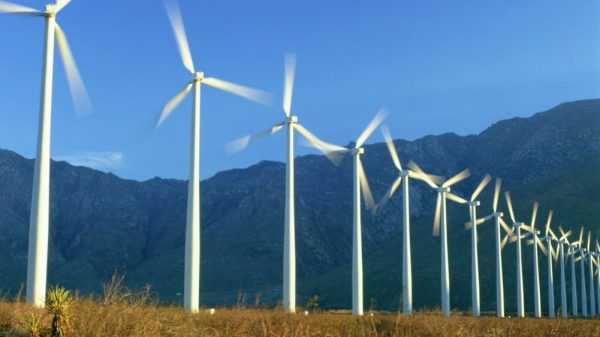Managing Canada’s ‘Energy Transition’ – devil is in the details
Evolution to a true low-carbon economy is not a 30-year transition, but a 50-to-100-year transformation
By Daniel F. Muzyka, Conference Board of Canada
In recent years, we have experienced a growing international consensus on the need to create a low-carbon future in order to mitigate major climatic changes that will impact economies and societies worldwide.
 While some remain skeptical, 195 governments came together and committed to a goal of reducing greenhouse gas emissions. Although there are conflicting interpretations of what would be required, a widely used measure is an 80-per-cent reduction from 1990 levels by 2050.
While some remain skeptical, 195 governments came together and committed to a goal of reducing greenhouse gas emissions. Although there are conflicting interpretations of what would be required, a widely used measure is an 80-per-cent reduction from 1990 levels by 2050.
The Canadian Academy of Engineering and The Conference Board of Canada came together to ask the following questions that arose from the Trottier Energy Futures Project, including:
- What are the implications for the economy of achieving those objectives?
- What does it mean for Canada and Canadians?
- After several years of analysis, we now have initial answers to these and other questions, which we shared at a recent conference on reshaping energy.
Is it technically feasible to reduce GHG emissions by 80 per cent? The short answer is “almost.” The Trottier Project developed a number of technical scenarios, and the closest it could get to was a 70-per-cent reduction.
However, this belies the scale of the undertaking.
If we are to achieve meaningful success (something that has largely evaded earlier climate change-related objectives), we need to move quickly from a discussion of aspirational goals to a general understanding of the economic and social implications, and the consensus, action and investment required.
The realities of the move to a low-carbon economy became apparent in our latest analysis.
First, achieving even half of the proposed objectives will require a transformation in how we live, build, travel and do business. Lifestyle expectations must and will change.
The evolution to a true low-carbon economy and society is not a 30-year transition, but a 50-to-100-year transformation. Along the way, there will be winners and losers , and all of us will be involved – voluntarily or otherwise.
Donate now! Please support quality journalism by contributing to our Patreon campaign. Even $5 a month helps us continue delivering high quality news and analysis about Canadian and American energy stories that affect your life and your lifestyle.
The second observation we make from our work is that small increments in carbon taxes have a limited impact on CO2 emissions. A carbon tax will have little overall impact on economic growth, provided governments recycle the increased revenue wisely.
Our analysis shows that if the price of carbon is the only tool used, it would need to rise well above the levels of what governments are currently implementing to drive the economy to meet the objectives.
This leads us to our third observation. Achieving the goals will require a major, thoughtful rebuilding of our energy, industrial and transportation systems, as well as the built urban environment.
It will take time and will require major new research and capital investment – in the order of $2-trillion to $3-trillion between now and 2050, or equal to 30 per cent to 50 per cent of annual non-residential business capital investment in Canada. Despite the positive economic effects, this level of low-carbon investment will crowd out other priorities and reshape options for growth and development.
Fourth, successful implementation will require massive electrification and the full and appropriate use of all available clean-energy technologies and policy tools. There must also be the sober recognition that existing technologies generally evolve at a predictable pace.
An east-west power grid is an essential feature of any solution.
To undertake these new energy projects, we also have to foster unprecedented political agreement and administrative alignment. Indigenous rights, individual beliefs and causes and regional differences need to be respected and recognized. Achieving our goals will be severely impeded if these issues result in protracted legal battles and regulatory reviews.
Finally, Canada cannot proceed in isolation. We need to take account of developments outside our borders in order to maintain our competitiveness.
While taking advantage of our natural resources, we need to be flexible and attentive enough to build on developments in other countries.
Although global companies and larger national players will have a bigger impact on the cost and development of new energy technologies and approaches, 35 million Canadians can make a difference.
We need to move from ideals and aspirations to a sober discussion of pathways and hard choices if we are to achieve our low-carbon goals.
History has shown that strong proponents need the conversation if they are to avoid disillusionment in the broader population.









The only problem with a slower transition (which, I agree, is much less disruptive than a quick one), is that it is incompatible with civilization. Small issue for economists, I suppose.